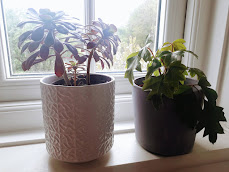I Find Out A Load About The Railway Industry
Heya friends! I've been up to quite a lot recently (including finishing Draft One of my Maths coursework yesssss) and today, I decided to do some researching about women in the railway industry (to be fair, this is for a challenge badge but also I am interested in female empowerment and the state of equality/lack of in the railway industry is an excellent indication of general equality in Britain). So yeah. I found out a load about the railway industry and now you can too!
At the birth of the railway near the beginning of the 19th Century (around the 1830s), the industry was structured in such a way to mirror how society worked. This meant that fathers and sons would follow each other into the industry while the women would become wives and mothers. They were, however, hired by rail companies to work although this work was prohibited to ‘women’s work’ such as cleaning and sewing. They were also able to be level crossing gatekeepers as it could be fitted in with family life - this particular job was often given to widows with children - but roles considered to be traditionally female included cook, kitchen assistant, waitress, cloakroom attendant and chambermaid.
When the First World War broke out in 1914, men were needed to go to the front and so women had to be recruited - railway companies were, in fact, one of the first major employers to recruit women, although this was initially in roles such as ticket collection. As the war went on, they had to take on increasingly physically demanding roles such as engine cleaners (one of the dirtiest jobs!)
Hey, fun fact: female railway workers were actually allowed to wear men’s breeches instead of getting their long skirts caught up or being unable to breathe due to tight corsets. Crazy, right?
Despite women being vital to actually keeping the railways running across the UK, they were subjected to scepticism, hostility and discrimination from their male colleagues and many of the passengers. For example, they earned less than the men who did exactly the same role (wow I cannot imagine that happening today, that’s crazy) and weren’t able to demand equal pay until they were permitted to join unions in 1915. And they were also expected to resign once they were married, because being a wife and then a mother is more important than anything and who needs free will, am I right?
At the end of the First World War, many women were forced out of their employment to make room for the men coming back from the war. However, in the interwar years, around 26,000 women worked in the railway industry - this number increased during the Second World War as, once again, the men were needed to fight. They were actually allowed to take on more physical jobs, such as passenger guards, engine cleaners, signallers and engineers.
Mrs Molly Temperley, 26, climbs up a signal post to fix a newly cleaned lamp, thus completing some essential signal maintenance.
The Second World War led to the National Service Act of 1941 which began national conscription of women, as the government decided that they needed more women completing war work than they’d be able to get solely from volunteers. To begin with, national conscription of women meant national conscription of single women, but by mid-1943, almost 90% of single women and 80% of married women were employed in vital war work in a range of industries. 105,000 women were employed by the railway industry.
When the war ended, there was nothing stopping women from applying for work on the railways - differing from the end of the First World War - but they were not encouraged at all to apply, especially for ‘male-only’ roles such as porters, engineers, and technicians. In the 1960s and 1970s, British Rail attempted to employ women as guards and signallers because there were large staff shortages, but it was not welcomed by the railwaymen, who threatened to go on strike, and so the attempt was scrapped.
By the 1970s, women working in the railway industry were confined once again to cleaning, catering or clerical work, facing discrimination and condemnation. However, in 1978, Karen Harrison became the first female train driver in Britain (when she was 18!) and things have slowly improved for women. Today, they account for approximately one in five of the railway workforce.
Karen Harrison :)
According to Network Rail (the owner & infrastructure manager of most of the railway network in Great Britain), as of 2018 16% of the 38,000-person workforce were women and, in an effort to encourage more women to enter the railway industry, they have introduced a flexible working policy (something that is very important to reduce the gender gap, as you’ll know if you have read Caroline Criado-Perez’s book, Invisible Women). They are also engaging with schools and colleges to encourage young people to choose to study STEM subjects in higher education, especially girls and young women.
Maybe Network Rail needs to partner with Girlguiding. You know, a large group of young girls/women. Who regularly do STEM-related activities. And, hey, they have done, as can be seen here!
It's fascinating really, especially as the railway industry is a relatively modern industry and so growing female empowerment can be tracked alongside. Part of me does feel a bit bad that I'm not going to pursue a STEM subject at university (I could do Maths but I don't want to) but hopefully I can encourage other people to do so, especially those little Brownies who can't quite reach the sink yet and still have the innocent naivety of youth in their eyes.
Sources/If you wish to find out more :)
Women in Rail: Industry Survey
St Pancras International: A Woman's World
BBC: The Women Who Kept Britain On Track

Comments
Post a Comment